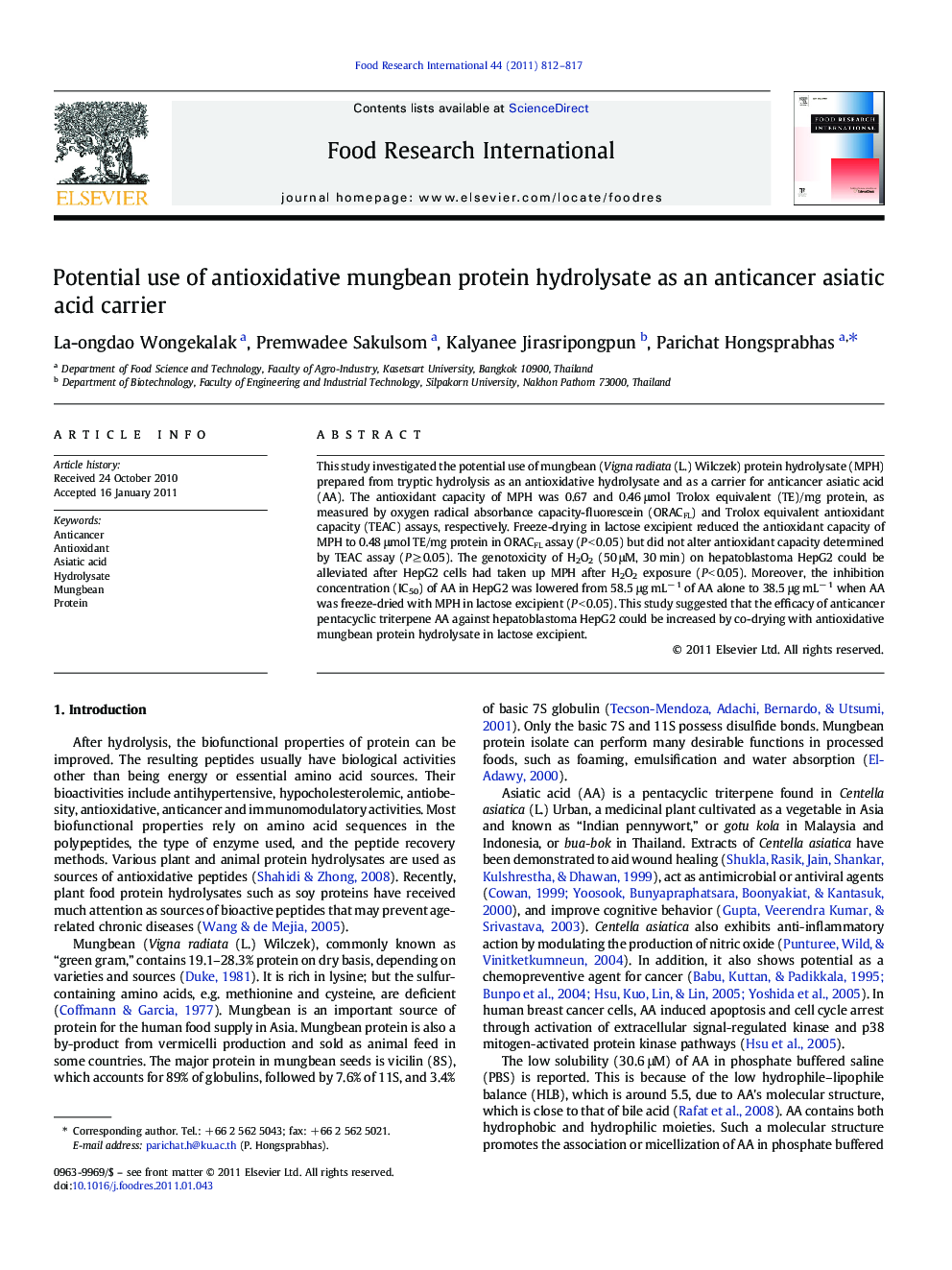| Article ID | Journal | Published Year | Pages | File Type |
|---|---|---|---|---|
| 4562003 | Food Research International | 2011 | 6 Pages |
This study investigated the potential use of mungbean (Vigna radiata (L.) Wilczek) protein hydrolysate (MPH) prepared from tryptic hydrolysis as an antioxidative hydrolysate and as a carrier for anticancer asiatic acid (AA). The antioxidant capacity of MPH was 0.67 and 0.46 μmol Trolox equivalent (TE)/mg protein, as measured by oxygen radical absorbance capacity-fluorescein (ORACFL) and Trolox equivalent antioxidant capacity (TEAC) assays, respectively. Freeze-drying in lactose excipient reduced the antioxidant capacity of MPH to 0.48 μmol TE/mg protein in ORACFL assay (P < 0.05) but did not alter antioxidant capacity determined by TEAC assay (P ≥ 0.05). The genotoxicity of H2O2 (50 μM, 30 min) on hepatoblastoma HepG2 could be alleviated after HepG2 cells had taken up MPH after H2O2 exposure (P < 0.05). Moreover, the inhibition concentration (IC50) of AA in HepG2 was lowered from 58.5 μg mL− 1 of AA alone to 38.5 μg mL− 1 when AA was freeze-dried with MPH in lactose excipient (P < 0.05). This study suggested that the efficacy of anticancer pentacyclic triterpene AA against hepatoblastoma HepG2 could be increased by co-drying with antioxidative mungbean protein hydrolysate in lactose excipient.
